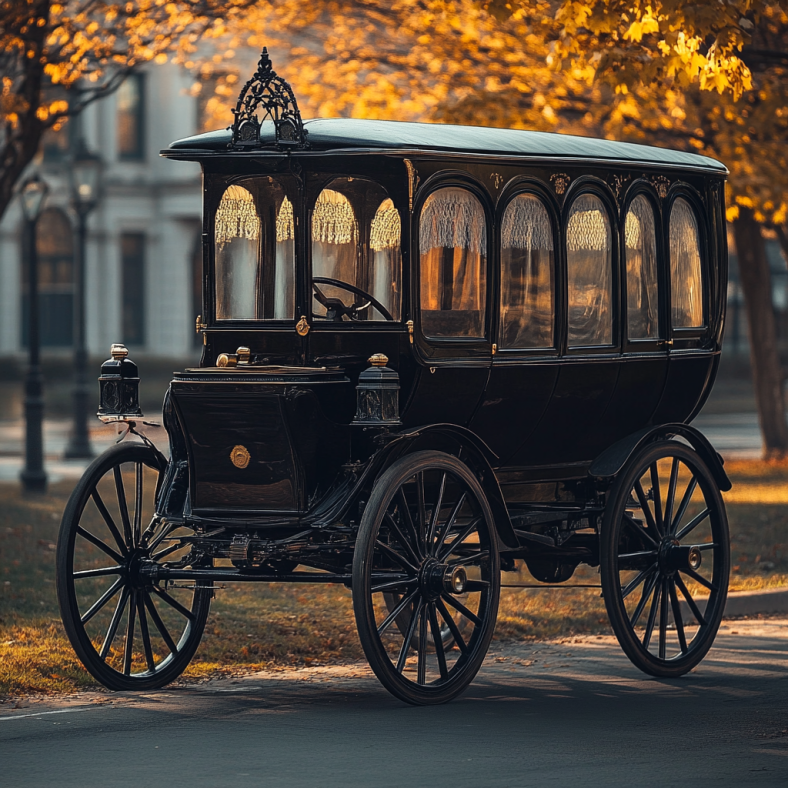Among the many elements that define the splendor of historical carriages, scent remains the most elusive yet evocative. The delicate aromas of fine leather, polished wood, aged upholstery, and even lingering traces of past travelers create an olfactory tapestry that transports us back to the grandeur of a bygone era. But do these fragrances survive restoration, or are they merely phantoms of the past? Exploring the intricate relationship between scent and craftsmanship, we unravel the secrets of how history clings to carriages in the subtlest yet most profound ways.
The Original Fragrance Palette of Historical Carriages
Before delving into whether restored carriages retain their original scents, it is essential to understand what defined their fragrance profile in the first place. Carriages were not merely modes of transport; they were moving sanctuaries of luxury infused with the scents of their materials, their passengers, and even the surrounding environment.
The Role of Materials in Crafting Scents
The choice of materials played a significant role in determining the olfactory identity of a carriage:
- Leather Upholstery – Premium leathers, often sourced from calfskin or deerskin, exuded a deep, musky aroma that grew richer over time.
- Wooden Framework – Mahogany, walnut, and oak contributed their own warm, resinous scents, interacting uniquely with polishes and varnishes.
- Fabrics and Lining – Silk, velvet, and brocade carried a faint yet persistent fragrance, often enhanced by perfumed sachets tucked into hidden compartments.
- Metal Elements – Brass and silver fittings, when polished, emitted subtle metallic overtones, mixing with other scents in the enclosed space.
Passenger Influence: A Touch of Personal Perfumery
Beyond materials, the personal scents of passengers became part of the carriage’s aromatic memory:
- Fine perfumes – Wealthy travelers often applied fragrances of ambergris, musk, or citrus notes, which settled into the textiles.
- Tobacco and Spices – Gentlemen’s cigars or a lady’s satchel of cloves could leave lingering traces over decades.
- Daily Life Residue – A mix of scents from gloves, garments, and even the occasional spilled tea or wine added to the olfactory complexity.
The Restoration Process: Preserving or Erasing History?
Restoration of a carriage is an intricate process that breathes new life into its form but often poses a risk to its intangible qualities—especially scent. Whether intentional or inadvertent, many restoration techniques alter or erase the original fragrances embedded within the carriage.
Traditional Restoration Methods and Their Impact
Restorers strive to preserve historical integrity while ensuring structural longevity. However, certain necessary interventions can strip away aged aromas:
- Deep cleaning and conditioning – Essential for preventing deterioration, but solvents and treatments often replace the natural aged scent with newer notes.
- Replacement of materials – While restoring upholstery, wooden panels, or metal elements, much of the original olfactory memory is lost.
- Fresh varnishes and finishes – Protective coatings alter the scent of the wood, sometimes overpowering its antique essence.
Attempts to Retain the Fragrance of the Past
Some restorers and preservationists take a more nuanced approach to maintaining a carriage’s olfactory history:
- Using historically accurate oils and waxes – Applying traditional polishes, such as beeswax, helps retain the authentic scent.
- Minimal intervention philosophy – Leaving certain aged elements intact, when possible, allows some original aromas to linger.
- Recreating old perfumes – Some experts subtly reintroduce historical fragrances through infusions and natural scent revival techniques.
Can Scents Be Revived? The Science of Olfactory Restoration
While physical restoration is well understood, olfactory restoration remains an emerging field. Can the invisible history of a scent be preserved or even recreated? Scientific advancements in scent analysis and artificial fragrance reproduction offer intriguing possibilities.
Scent Profiling and Extraction Techniques
Modern techniques allow experts to capture and study residual fragrances within historic artifacts. Methods such as:
- Gas Chromatography-Mass Spectrometry (GC-MS) – Identifies and replicates scent compounds found in aged materials.
- Microencapsulation Technology – Preserves fragile scent molecules, allowing them to be reintroduced in controlled ways.
- Historical Perfume Reconstruction – Based on archival research, perfumers recreate the likely scents that filled these carriages centuries ago.
Ethical Considerations in Scent Restoration
The question remains: should we restore scents, or is their absence part of the carriage’s evolving history? Some purists argue that any intervention distorts authenticity, while others believe reviving a carriage’s original fragrance enhances historical appreciation.
The Role of Environment in Scent Retention
A carriage’s scent is not only shaped by its materials and passengers but also by the environment in which it was stored and used. Over time, environmental factors influence how scents are preserved or dissipated.
Climate and Storage Conditions
- Temperature fluctuations – Heat accelerates the breakdown of organic compounds, potentially erasing delicate fragrance notes.
- Humidity levels – Excess moisture can introduce mold and musty odors, while overly dry conditions may cause materials to crack and lose their scent.
- Air circulation – A well-ventilated storage space helps maintain olfactory integrity, preventing stagnation and unwanted contamination.
Exposure to External Scents
Carriages that were stored in stables, near fireplaces, or in urban environments absorbed additional scents from their surroundings. This could either enrich or obscure their original aromatic character.
The Ephemeral Nature of Olfactory Memory
Even if a carriage’s scent endures, our ability to perceive and interpret it is subjective. The psychology of olfactory memory plays a crucial role in how we experience historical fragrances.
The Power of Association
- Scents trigger personal memories, often evoking emotions or transporting us to a particular era.
- A person’s familiarity with certain historical scents influences how they perceive a carriage’s original fragrance.
The Challenges of Capturing a Fading Scent
- Some scents degrade faster than others, making them difficult to analyze or reproduce.
- Aged scents may blend into new aromas introduced during restoration, altering their original profile.
Future Innovations in Preserving Carriage Scents
As technology advances, new methods emerge to preserve and even restore the scents of historical artifacts. Future possibilities include:
- AI-driven scent reconstruction – Using machine learning to predict and recreate lost fragrance compositions.
- Biochemical preservation techniques – Extracting and stabilizing historical scent molecules for long-term conservation.
- Interactive museum experiences – Providing visitors with reconstructed scents to enhance the sensory connection to history.
Q&A Section
Materials, passenger perfumes, tobacco, environmental exposure, and the aging process all influence a carriage’s scent profile.
Yes, depending on the level of restoration, cleaning agents, material replacement, and refinishing techniques can remove much of the original scent.
Through modern scent analysis and historical perfume reconstruction, experts can approximate the original olfactory experience of a historical carriage.

